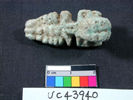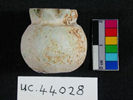| Homepage | Timeline | Maps | A-Z index | Learning |
Faience in Nubia, Napatan and Meroitic Period
One of the highlights of arts and crafts in Nubia is the production of faience objects. Already the Kerma culture seems to have produced faience on a substantial scale, but especially in the Meroitic Period faience objects are common, and distinct in details of production from those in Egypt. More research is needed into the technology of Nubian faience: the precise dating of the following objects is only certain when the object bears the name of a king.
(click on the images for larger pictures)
Faience objects of the Napatan period. They are in general very close to Egyptian prototypes.
|
shabtis from royal burials
|
votive offerings found at Meroe
|
||||||
 |
 |
 |
 |
 |
 |
 |
|
|
Two amulets ('red crowns'), found at Sanam
|
plaque with hierogly-phic inscription
|
votive offerings (?), Meroe with name of Aspelta
|
|
 |
 |
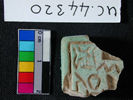 |
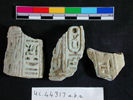 |
Faience objects of the Meroitic Period (about second century BC to fourth century AD). Some of these objects are made in a Greek-Roman classical style and may, like some glass vessels from Meroitic sites, have been imported from the Ptolemaic and Roman worlds.
|
zodiac
|
fragment of a statue of a king
|
disk with classical head
|
amulet in shape of a lion
|
vessel
|
|
|
Amun ?
|
amulets ?
|
|
 |
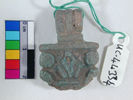 |
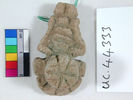 |



